This small upright pot with a distinctive profile was designed for a bain marie, but I use it for much more than that.

- Type: Tin-lined bain marie pot in hammered finish with iron handle fitted with three copper rivets
- French description: Bain marie à sauce étamé et martelé avec queue de fer munie de trois rivets en cuivre
- Dimensions: 16cm diameter by 18.5cm tall (6.3 inches by 7.3 inches)
- Weight: 2166g (4.8 lbs)
- Thickness: 2.5mm at rim
- Stampings: None
- Maker and age estimate: Likely Gaillard; 1960s-1980s
- Source: My mother
My mother is an exceptional cook. She is perpetually modest about this, but her fierce intellect and genuine desire to nurture others combine to make her a skilled, generous, and creative chef. I’ve taken to cooking later in life and one of my biggest regrets is not taking better advantage of her patient lessons and non-judgmental efforts to encourage me over the many years before I was ready to hear them. (Mom, if you’re reading this, I love you.)
She had the foresight to reach out to Julia Child back in the 1980s. She and Julia exchanged a few letters and, in addition to supplying cooking advice, Julia sent my mom a signed wooden spoon that is proudly displayed to this day in my mom’s kitchen. One of the pieces of advice Julia gave my mom was to stop by the Dehillerin store in Paris to buy some good French copper as soon as possible. The opportunity arose in the early 1980s, and my mom bought a clutch of copper pots and pans, tin-lined and nickel-lined, that she uses to this day.
And in her generosity she gave this one to me. I will always love it because it’s from her, but I have come to appreciate it in particular because it’s a pretty useful little pot.

This tall and narrow shape is designed to function as part of a bain-marie, a water bath for gentle and consistent heat for delicate sauces and broths. Jules Gouffé’s 1867 cookbook Le livre de cuisine shows a full bain-marie set consisting of a caisse à bain marie, the low rectangular outer pan, containing a gaggle of bains-maries à glace (bain-marie pans for glaze) labeled for the sauce they contain.
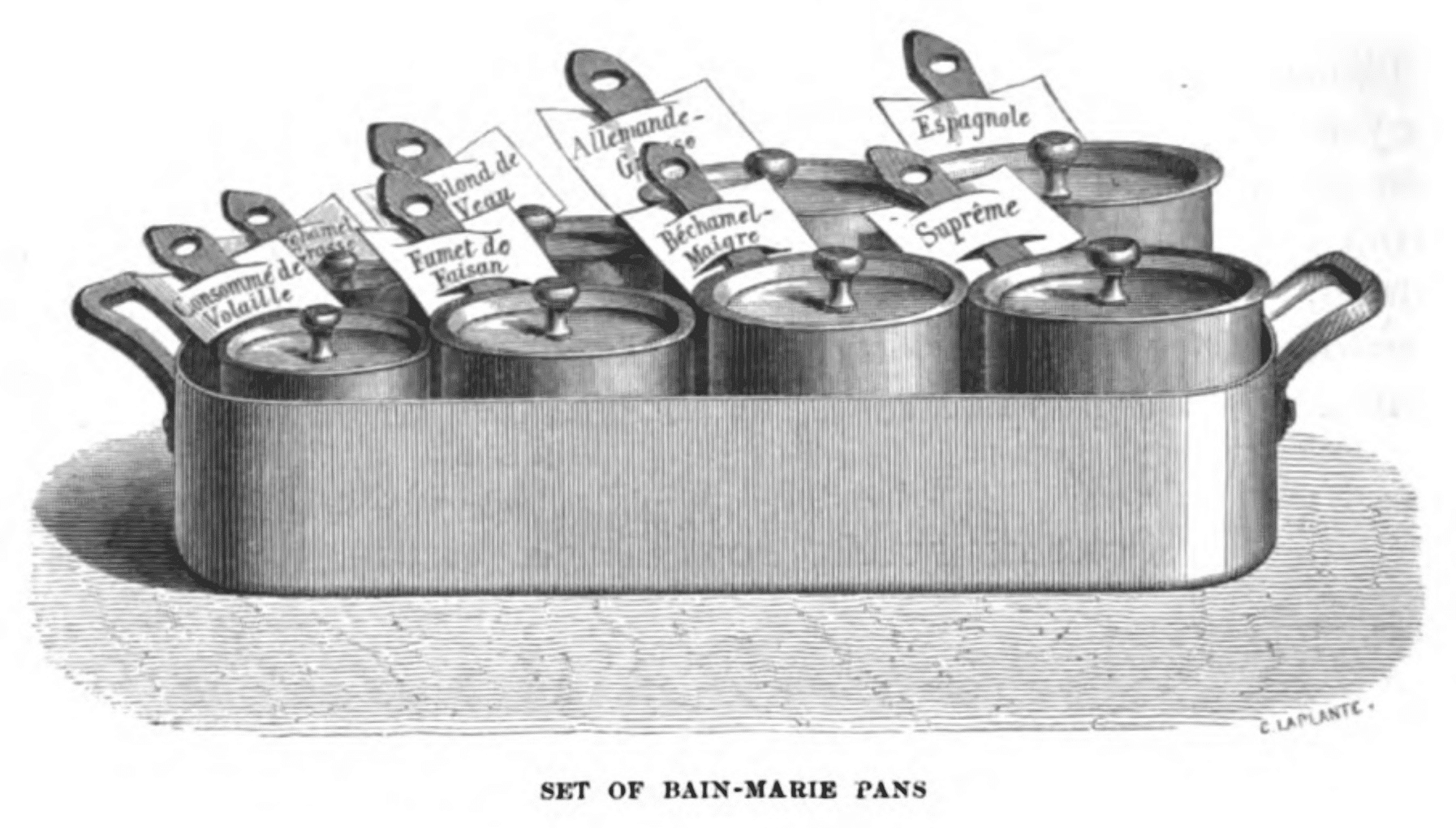

Other sources differ. Elizabeth David in French Provincial Cooking refers to the inner vessels as casseroles (saucepans). She firmly maintains, however, that what we ignorantly call a casserole is more properly a casserole russe (Russian), a taller and narrower version of shallow saucepans such as the casserole à sauter — what we, all unknowing, would call a sauté pan. (The term casserole russe comes from the famous dinner in 1810 at which the Russian ambassador to France served a meal in a series of hot courses instead of the usual serve-yourself platters à la française, creating both a new “Russian” style of dinner service — à la russe — as well as a new type of smaller saucepan in which to cook the portions.)
So is this pot a russe? In a lengthy thread on Chowhound, it was revealed that the French recognize fine increments of proportion in saucepans that evade more brutish sensibilities. According to an early Gaillard catalog, a casserole is a low saucepan slightly shorter than it is wide, while a casserole russe is a saucepan 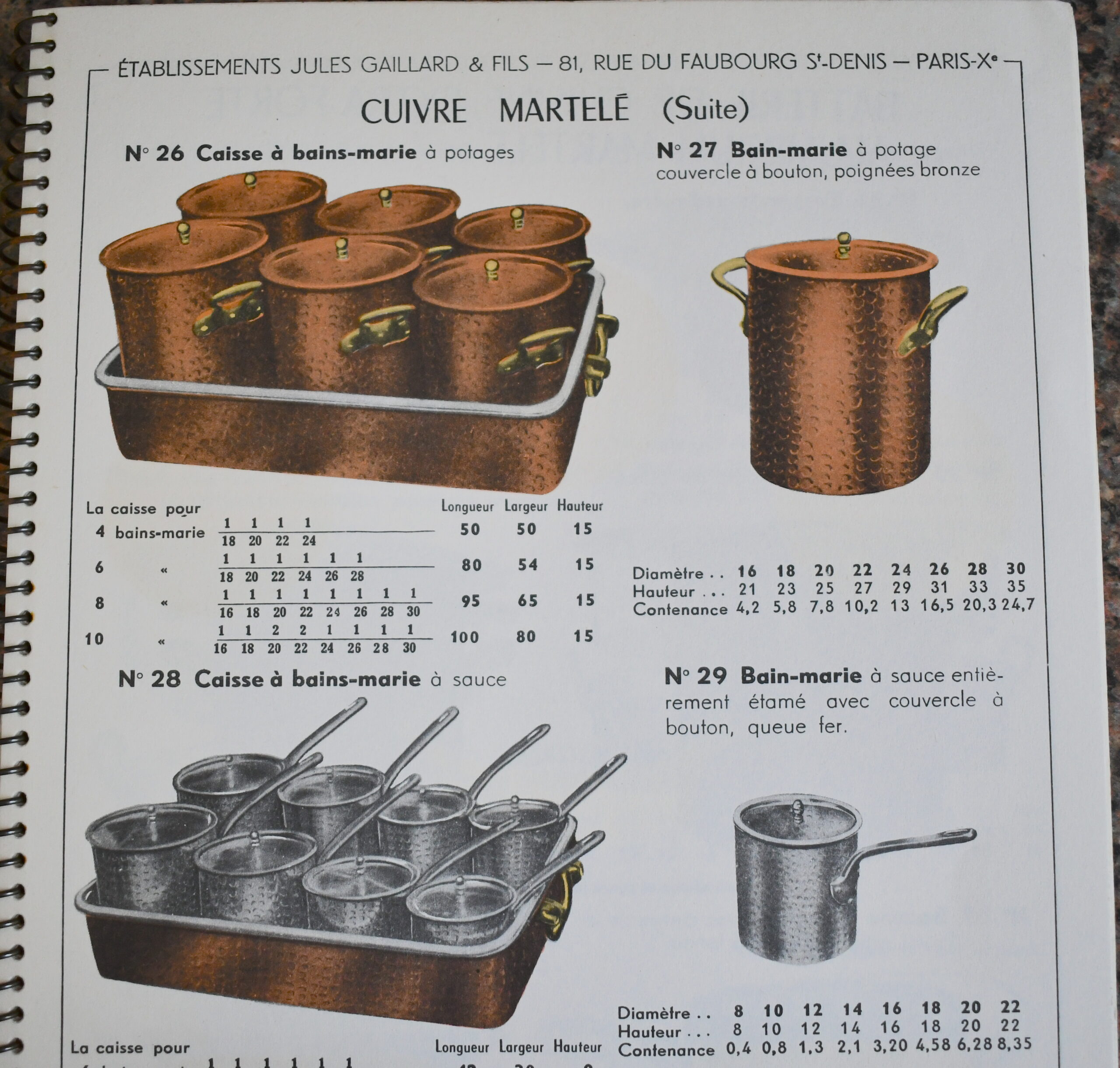 of a height equal to its width. A casserole that is obviously taller than it is wide is a casserole à jus (pan for sauce). (Additionally, there is the casserole à glacer, but my research shows this designation to depend upon the lid, which must be a tight-fitting cap to contain moisture and heat to prevent the glaze from hardening.)
of a height equal to its width. A casserole that is obviously taller than it is wide is a casserole à jus (pan for sauce). (Additionally, there is the casserole à glacer, but my research shows this designation to depend upon the lid, which must be a tight-fitting cap to contain moisture and heat to prevent the glaze from hardening.)
But finally, ultimately, there is Gaillard, whose 1956 catalog shows bains marie for both potages (soups) and sauces, the former with brass handgrips and the latter with iron stick handles. Note, however, that Gaillard tinned the inside and outside of its bains marie à sauces, while the bains-marie à potages remained bare copper on the exterior. Why the difference? I am not certain. But this pot of mine very closely resembles Gaillard’s version down to the inverted triangle shape of the baseplate, and I think this is in fact a Gaillard pot. It seems possible that by the 1980s, when my mom bought this at their store, Dehillerin had long since decided that modern-era cooks didn’t want tin on the outside of their pots and commissioned Gaillard to keep them uncovered.
And that’s why I think this little pot is a 1960s-1980s Gaillard bain marie à sauce, stamped for and sold by Dehillerin.
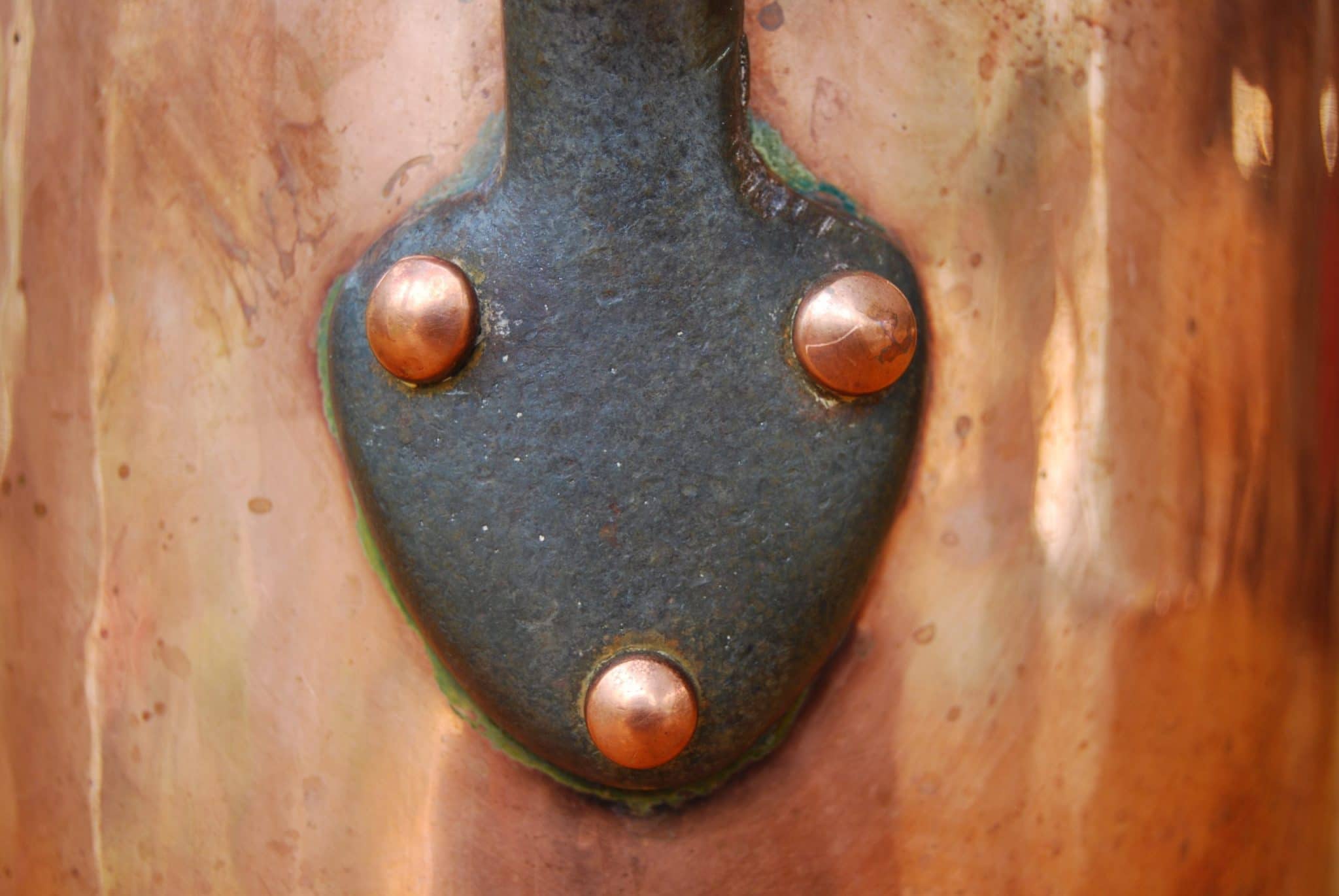

The pot and its tin are in unrestored shape.
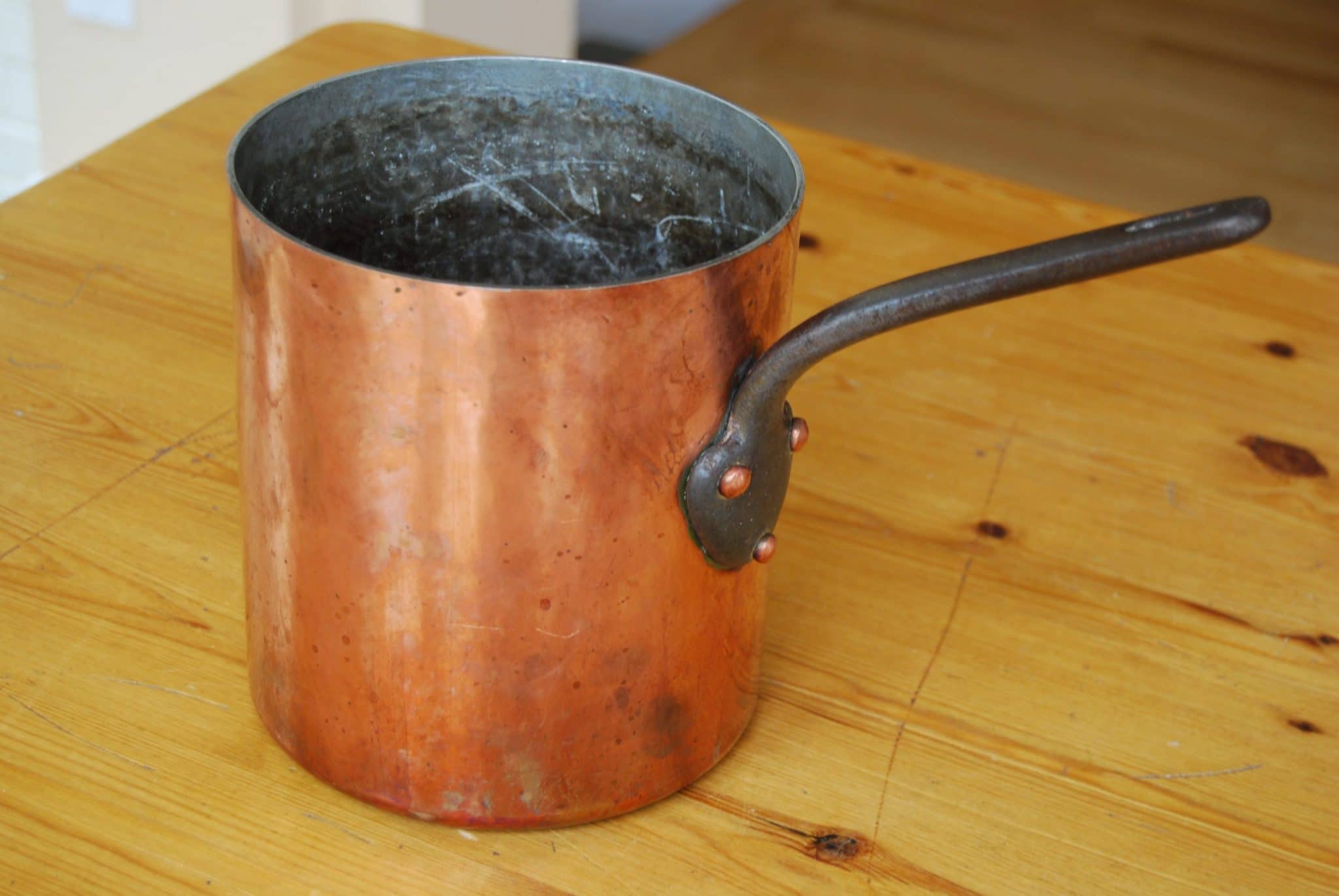
When I first got it, I gave the pot a good soap and water cleaning, but it needed a little more work (sorry, Mom). As you can see in the photos below, the pot had some brownish grease on the tin. Baking soda reacts with the acids that hold the grease in place, and in boiling water the chemical reaction will lift the grease right off with no scrubbing. As you can see below, it works very well.
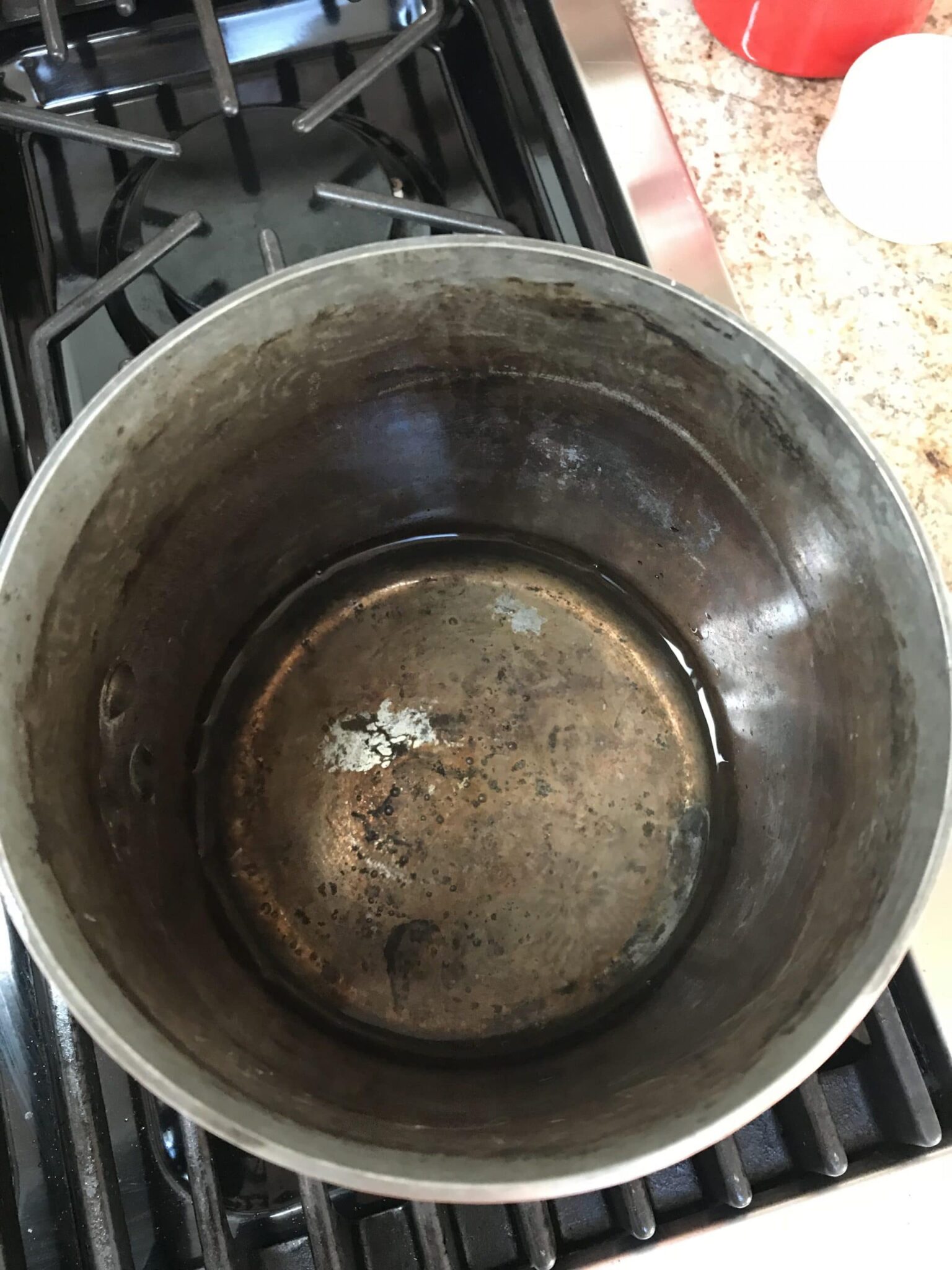

The great thing about this pot is that its usefulness extends well beyond the confines of the caisse à bain marie. With all due respect to Gaillard, I think of it as a small soup pot — a tall skinny pot designed to heat liquids with a small exposed surface area to limit evaporation. I’ve used it to make soup, but also to boil pasta and blanch vegetables. It’s a perfect size for everyday household cooking.
Thanks Mom!





